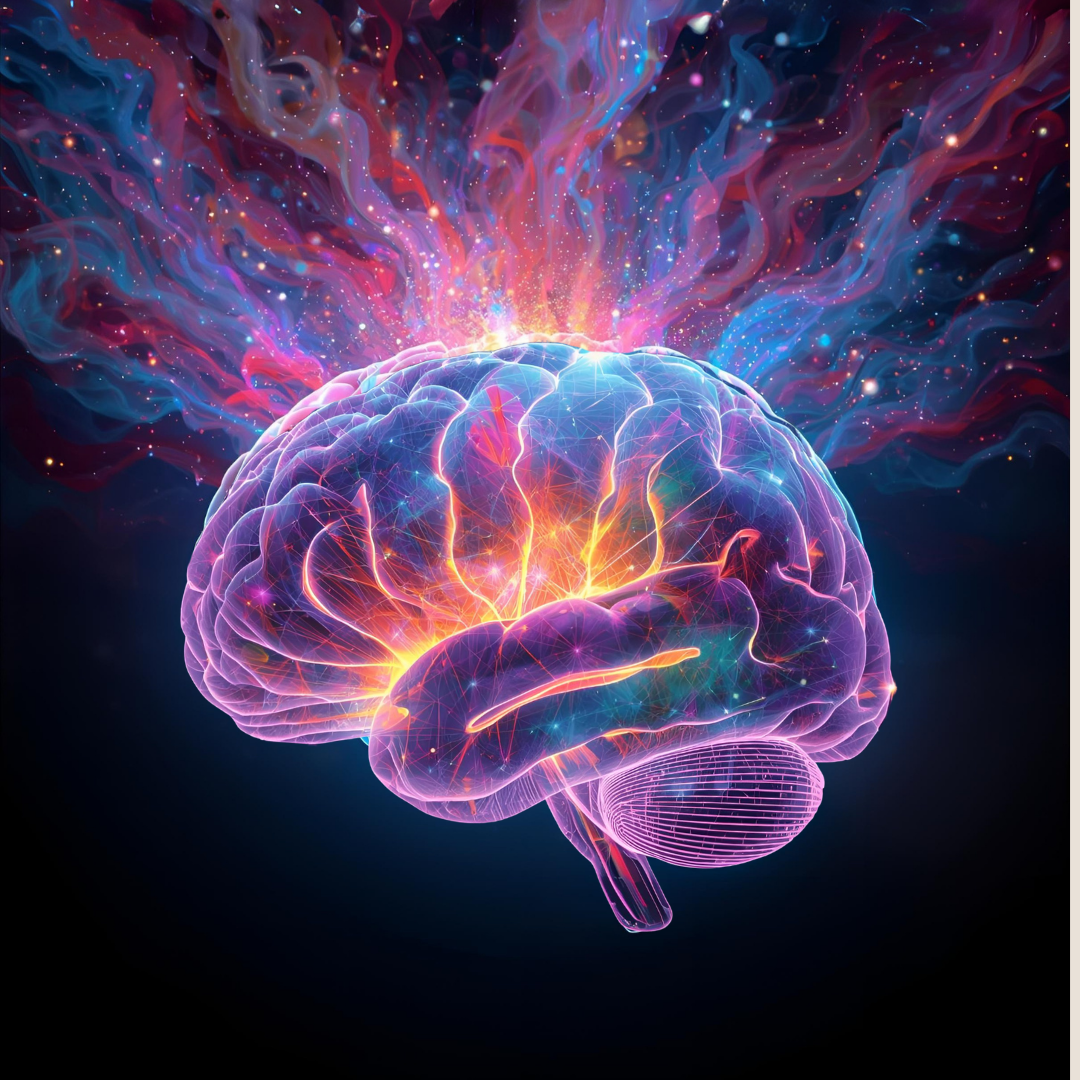Immune System in Overdrive: The Surprising Power of MAST Cells

Many people live with unexplained symptoms like fatigue, skin reactions, gut issues, or sudden changes in heart rate, that seem to come out of nowhere. While these symptoms are often brushed off or misattributed, for some people they may be linked to a lesser-known part of the immune system: mast cells. These small but powerful cells help protect us from infections and allergens — but when they misfire, they can trigger a cascade of effects throughout the body.
What are Mast Cells?
Mast cells are a type of white blood cell found in places where your body meets the outside world, like your skin, lungs, and gut. They act as early warning systems in the immune response, quickly reacting to threats by releasing a powerful mix of chemicals.
Think of mast cells as the body’s guard dogs. When they sense danger, whether it’s a bee sting, or a virus, they “bark” by releasing chemicals like histamine, triggering redness, itching, swelling, or sneezing to help protect you.
In a healthy system, mast cells settle down once the threat is gone. But sometimes they stay on high alert, overreacting to things that aren’t truly dangerous - or reacting with no clear trigger at all. This is called mast cell activation, and when it becomes chronic or severe, it can lead to Mast Cell Activation Syndrome (MCAS).
A cocktail of mediators: Mast cells release not just histamine, but also prostaglandins, leukotrienes, cytokines, and enzymes like tryptase. This mix can cause inflammation and affect multiple systems throughout the body.
Ongoing flare-ups can be physically exhausting and mentally draining, especially when they’re frequent and unexplained.
Symptoms
Mast cell disorders affect different people in different ways, depending on which systems are involved. Common symptoms include:
- Flushing, itching or hives
- Abdominal pain, diarrhea, nausea or vomiting
- Rapid heart rate or blood pressure variability (light-headedness, fainting)
- Fatigue, “brain fog,” mood swings
- Bone or muscle pain
- Enlarged liver, spleen or lymph nodes
- Anaemia or easy bleeding
Symptoms can be delayed and varied: You might break out in hives after exposure to a trigger, feel fine for an hour, then experience gut cramps, a racing heart, or sudden fatigue.
Causes
Mast cell disorders can develop in different ways. In some people, the cells themselves are abnormal; in others, perfectly normal mast cells become overly reactive due to outside triggers. The causes generally fall into three categories:
-
Secondary (Reactive) MCAS
Triggered by a strong immune challenge—such as a viral infection (like COVID 19), certain medications, environmental toxins, or even severe physical or emotional stress.
-
Idiopathic MCAS
No clear trigger is found, mast cells simply begin firing too easily.
-
Primary (Clonal) MCAS/Systemic Mastocytosis
Systemic Mastocytosis: a rare condition driven by a genetic mutation (most often in the KIT gene) which makes too many mast cells grow and accumulate in organs like bone marrow, liver or spleen.
Common Triggers and Support Strategies
Even when flares seem random, most people with mast cell issues notice these common culprits (though specific triggers differ from person to person):
- Foods & beverages high in histamine
- Temperature extremes
- Strong odours & chemicals
- Stress & emotional upsets
- Intense exercise
- Skin irritation
- Medications:
Opiates (codeine, morphine), NSAIDs (aspirin, ibuprofen) and some antibiotics (vancomycin) can directly provoke mast cells. Track if any cause reactions and discuss alternatives with your doctor.
How to Calm a Flare
If a flare hits, these simple strategies can help bring symptoms under control:
- Antihistamines (H1 blockers): Over the counter options like cetirizine or loratadine can help ease itching, hives, sneezing, and swelling.
- Hydration and rest: Flare-ups often worsen with poor sleep, dehydration, or overexertion. Prioritise rest, regular meals, and electrolyte-rich fluids.
- Nervous system support: Stress hormones can provoke mast cell activation. Short practices like box breathing, meditation, or gentle stretching can help lower your flare threshold.
Longer-Term Supports
Outside of flares, some supplements and strategies may help reduce baseline inflammation and support more stable mast cell behaviour:
- Low-histamine diet: Reducing high-histamine foods (like aged cheese, cured meats, leftovers, and alcohol) may help lower the overall load on your system.
- Store leftovers in airtight containers and eat them quickly (histamine builds in food over time)
- Limit alcohol and caffeine: These can increase histamine release or interfere with your body’s ability to break it down.
- Prioritise sleep hygiene: A cool, dark, quiet room can improve sleep quality—crucial for immune regulation and mast cell balance.
- Regular gentle movement: While intense exercise can be a trigger, regular low-to-moderate movement (like walking, swimming, yoga) can help with circulation, stress regulation, and inflammation.
- Filter your air and water: Environmental triggers like mold, VOCs, or chlorine can aggravate sensitive systems. An air purifier and simple water filter can reduce the background load.
- Temperature regulation: Dress in layers and avoid rapid swings between very hot and very cold environments.
Targeted Supplements - NAC (N acetylcysteine): Supports antioxidant pathways and may help reduce histamine and oxidative stress. Start with a low dose, as some people with MCAS can be sensitive.
- Quercetin: A natural flavonoid with mast cell–stabilising properties. Often used alongside antihistamines to help reduce reactivity.
- Vitamin C: Can help degrade histamine and reduce mast cell activation.
- Probiotics: Spore-based probiotics may support gut health and help modulate immune responses without overstimulating sensitive systems.
- Methylated B-complex (especially B6): Supports methylation, detox pathways, and nervous system regulation. Vitamin B6 in its active form may help with histamine clearance.
Seeing a Professional
Mast cell disorders are relatively uncommon, and their symptoms can overlap with many other conditions. That’s why proper testing and the insight of a healthcare professional are important for getting the right diagnosis.
If you think mast cells might be playing a role in your symptoms, it helps to come prepared:
- Bring your symptom diary: Record dates, foods, meds, stressors, and exactly what you felt (hives, cramps, palpitations).
- Specific mediator tests
- Standard allergy tests often miss it: Because the reactions aren’t tied to one specific allergen, test results may come back normal.
- Serum tryptase: drawn within 1–4 hours of a flare and again at baseline
- A significant rise—at least 20% above your baseline plus 2 ng/mL—can support a diagnosis of MCAS.
- If tryptase is normal, your doctor might consider a 24 hour urine test to check for other mast cell markers like histamine or prostaglandin D₂.
- Request a referral to an allergist/immunologist: These specialists often have more experience with diagnosing and managing mast cell disorders.
- Specific mediator tests
Diagnosing Mast Cell Activation Syndrome (MCAS) typically requires three key criteria:
- Symptoms affecting at least two organ systems (e.g. skin and gut, or heart and brain).
- Objective evidence of mast cell mediator release, such as elevated tryptase, histamine, or prostaglandin D₂.
- Clear improvement with treatments that block or stabilise mast cells.
Looking Forward
Understanding of mast cell disorders has grown significantly in recent years — and it’s only accelerating.
- Greater awareness: More healthcare professionals are recognising conditions like MCAS and systemic mastocytosis, leading to faster diagnosis and better support for those affected.
- Improved testing: Advances in lab tests and genetic tools are making it easier to detect mast cell activity, even in complex cases.
This growing field offers something that once felt out of reach for many of those suffering from “mystery symptoms”: real answers.
Helpful Resources
The Mast Cell Disease Society (TMS)
AAAAI MCAS overview
Full References available here




